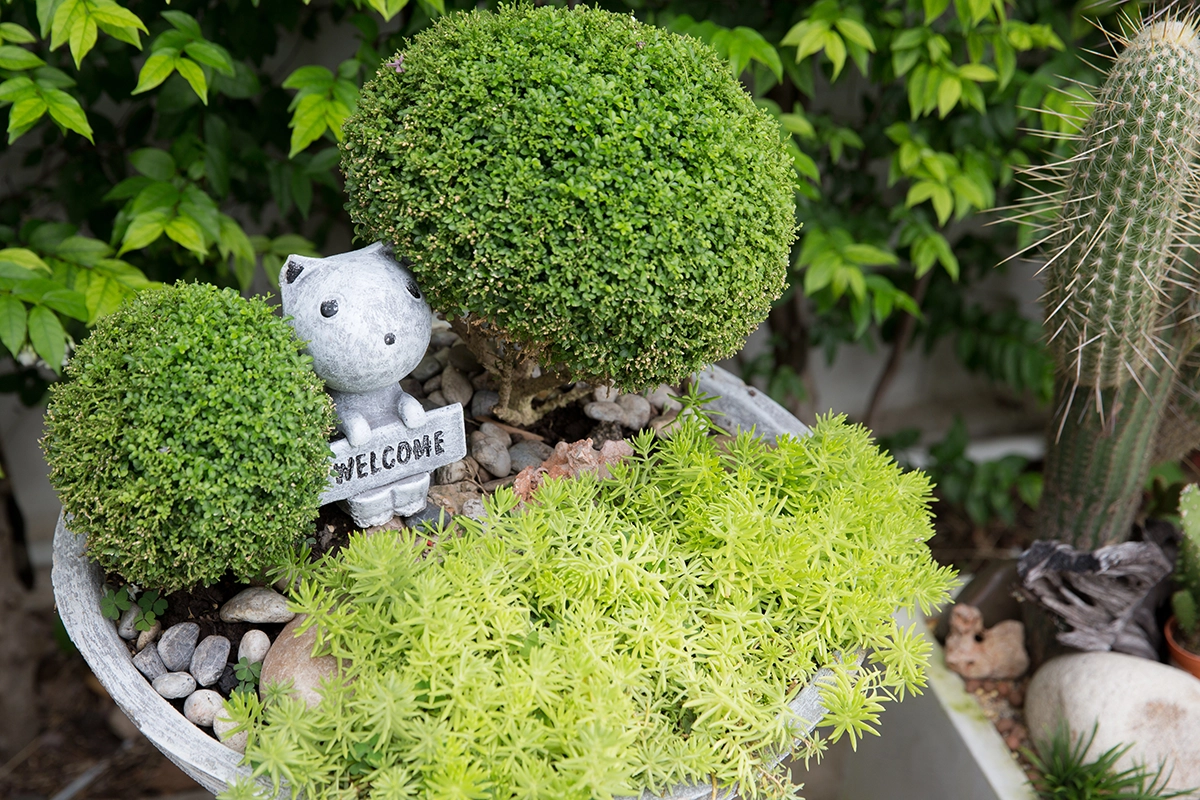Small Space clever tiny home decor and design ideas that will inspire!
The first step in making your tiny home feel both spacious and stylish is to reduce your load. A home that is laden with too many items can feel cluttered or out of sync. If you have already downsized, you may still have some work to do in this area. Home décor items for small spaces should be vetted for what they can lend to (or take away from) your spaces.
A minimalist interior style is one option that works well in small spaces. However, if a minimalist interior does not appeal to you there are many other options. One of the main principles in creating an airy more spacious look in a small house is the one of cohesion.
Principle of Cohesion
The principle of cohesion is very important when decorating small spaces.
Use the same color on walls, woodwork, and furniture. This creates a sense of cohesion and continuity, making the room appear large and airy. Cohesion in tiny house interiors is the quality of having a unified and harmonious design that ties together all the elements of your space. Cohesion can make your tiny home feel more comfortable, inviting, and aesthetically pleasing.
Here are some design ideas to achieve cohesion in your tiny house interiors:
Choose a Color Scheme
A color scheme is a set of colors that work well together and create a mood for your space. You can choose a color scheme based on your personal preference, your location, your style or your theme. For example, you can use a coastal color scheme with whites, blues and yellows if you live near the beach, or a boho color scheme with earthy tones and pops of color if you like a creative and eclectic vibe.
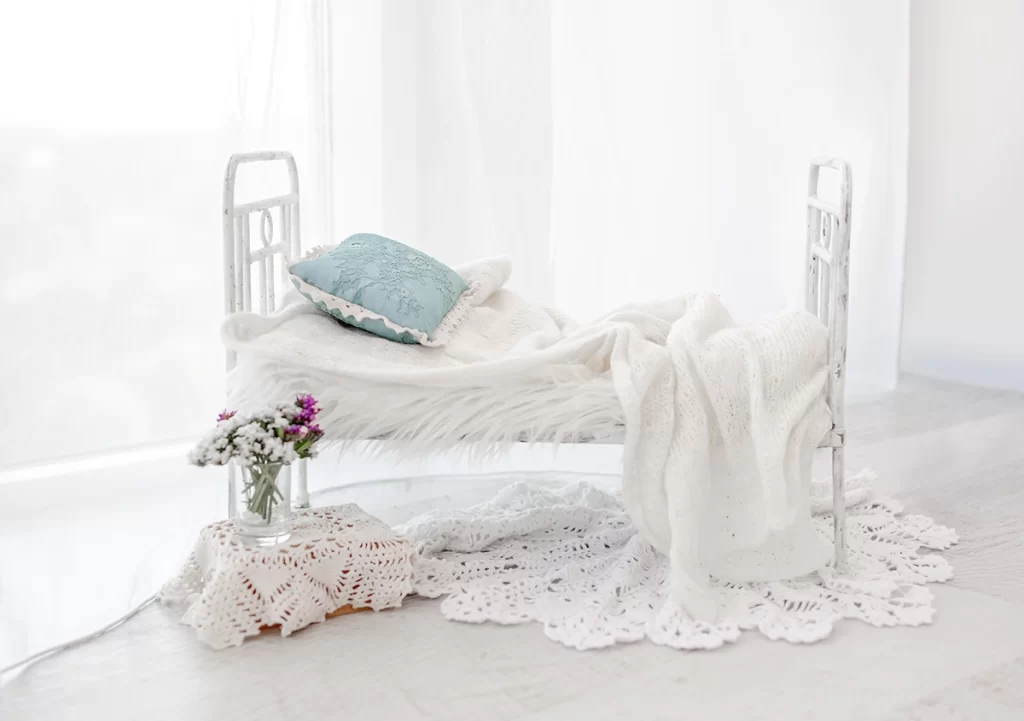
Use Repetition and Contrast
Repetition and contrast are two design principles that can help you create cohesion in your tiny house interiors. Repetition means using the same or similar elements throughout your space, such as shapes, textures, patterns, or materials. Contrast means using different or opposite elements to create interest and balance, such as colors, sizes, styles, or other finishes. For example, you can use repetition by using wood for your flooring, cabinets, and furniture, as well as adding contrast through the use of metal accents or colorful pillows.
Consider the Layout
The functionality and layout of your house is an essential factor in developing a cohesive home interior theme. Consider everything from any plans of removing a wall or adding a sectional sofa to a specific area for possible renovations. You want to make sure that your design choices fit your needs and lifestyle, as well as complement each other.
Add Personal Touches
Cohesion does not mean uniformity or blandness. You can still add some personal touches to your tiny house interiors that reflect your personality, hobbies, passions, or memories. You can use artwork, photos, souvenirs, books, plants, or anything else that makes you happy and inspired. Just make sure that they match your color scheme and style, and that they don’t clutter your space.
More Clever Tiny Home Decor
There are many clever Tiny Home decor ideas for tiny homes that can help you make the most of your space and style.
Be Strategic
Be strategic with patterns and pops of color. You can add some visual interest and personality to your small living room by using patterns and colors that complement your neutral palette. For example, you can layer a smaller patterned rug over a larger solid rug, or use a wire mesh coffee table that adds texture without visual weight.
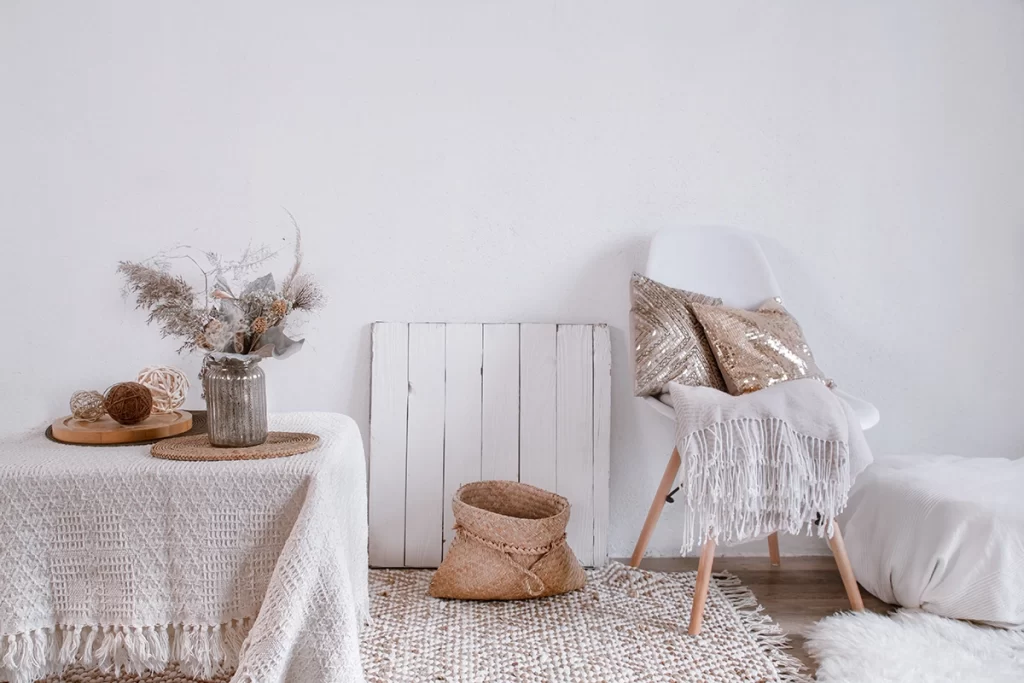
Clever Tiny Home Decor Ideas
Opt for Natural Accents
Natural materials like wood, stone, rattan, and plants can bring warmth and texture to your small home, as well as create a connection to nature. You can also use mirrors to reflect natural light and expand the space.
Make the Most of Vertical Space
You can use wall-mounted shelves, hooks, racks, and cabinets to store your belongings and free up floor space. You can also use curtains or room dividers to create zones in your small home. The use of vertical space on the outside walls of your tiny home can give your tiny home a personal touch as well. Installing pegboards and bike racks to your exterior walls can free up your interior space. Things like a live arbor around your doorway, or installing a vertical garden, using planters or a trellis to grow herbs or vegetables can set the tone for the interior. Just make sure to properly secure any additions to your tiny home’s exterior.
Lighten Up with Creative Lighting
Lighting can make a big difference in how your small home feels. You can use pendant lights, sconces, and wall lamps, to free up floor space while creating different moods and focal points. You can also use dimmers and smart bulbs to adjust the brightness and color of your lights. Consider natural light options as well such as roof lights or skylights. Windows can bring the outside in which lends itself nicely to a wellness or natural decor style.
More Unique Small Space Design Tips
Pocket doors are doors that slide into a recess in the wall, saving space and creating a seamless transition between rooms. They are ideal for small spaces where swinging doors would take up too much room or block the flow of traffic. You can also use pocket doors with glass windows to allow for shared light and privacy.
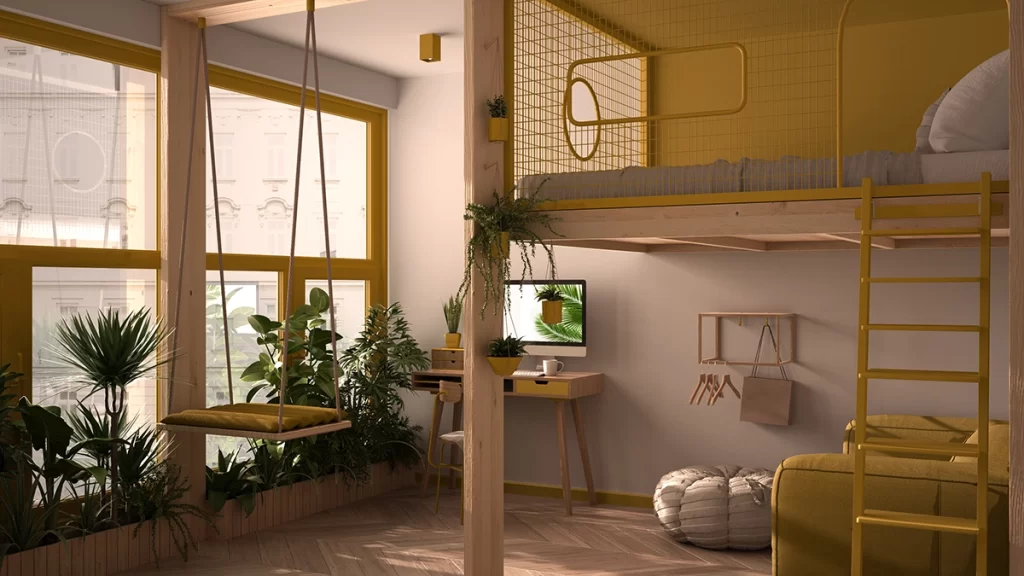
Fun Swing Seating, a Loft Bed with Sofa Seating underneath, and lots of Greenery!
Fun Swing Seating
A swing can be a fun and unexpected way to add some seating and movement to your tiny home. You can hang it from the ceiling or a sturdy beam, and use it as a chair, a sofa, or even a bed. You can also choose a swing that matches your style and decor, whether it’s rustic, bohemian, or modern.
Dining Tables Alternatives
A dining table can take up a lot of space in a tiny home, especially if you don’t use it often. You can save space by choosing a smaller table that fits your needs, such as a drop-leaf table, a nesting table, a wall-mounted table, or a coffee table that converts into a dining table.
Out of Sight Out of Mind
Utilities like water heaters, pipes, wires, and laundry machines can be unsightly and take up valuable space in your tiny home. You can hide them behind cabinets, curtains, panels, or doors to create a cleaner and more organized look. If your exterior yard space is adequate you could even have a small secure storage building installed to house some of these items. Galvanized, hot water heater enclosures are available from your local home improvement store and are manufactured for use outside.
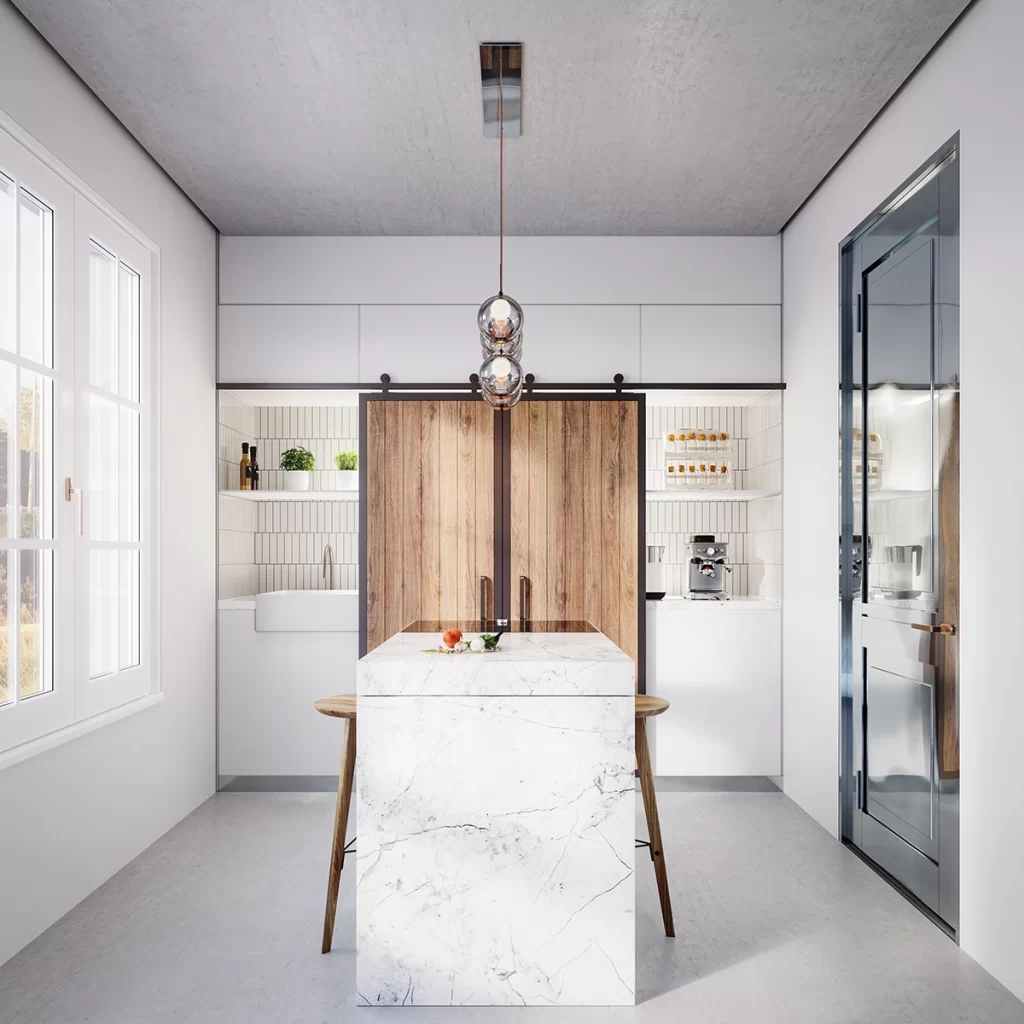
Pendant Lights, Open Face Window, Reflective Materials, and Focal Wall Using Barn Doors
Mirrors and Reflective Materials
Mirrors are a great way to make a small space appear larger. Hang a large mirror on a wall or lean it against a wall to reflect light and create the illusion of more space. Glass, metal, and lacquer can also create a sense of spaciousness and brightness in your tiny home, as they reflect natural and artificial light. You can use them on walls, furniture, doors, and tiles.
Add Plants
Plants not only add a pop of color to a room, but they also help purify the air. Choose plants that don’t require a lot of sunlight or maintenance, such as succulents or snake plants if sunlight is limited. Vertical wall hangers or hanging plants from the ceiling also frees up floor space. If you are lucky enough to have a skylight or sliding glass door then your favorite sun-loving plants will thrive!
Use Multi-Functional Furniture
Invest in furniture that serves multiple purposes, such as a storage ottoman or a sofa bed. This will help you save space and money. Some other multi-functional furniture ideas for tiny homes include a folding dining table, a wall-mounted desk, a Murphy bed, a convertible coffee (to desk) table, a storage staircase, a modular shelving system, a pull-out pantry, and a hidden storage bed. A rolling kitchen island that can be moved where needed and is a great option if space allows. These pieces of furniture can help maximize space and provide multiple uses in a small living area.
Add Shelves
Shelves are a great way to add storage and display items without taking up floor space. Install floating shelves or use a bookshelf to create a focal point in a room. Some additional hanging shelf ideas for tiny homes include using rope or leather straps to suspend shelves from the ceiling, using a ladder as a hanging shelf, creating a hanging plant shelf, and using a pegboard to hang shelves and other items. Other ideas include hanging shelves on the wall with brackets and using a tension rod to create a hanging shelf in a small space.
Accent Wall Ideas for Small Spaces
Painting an accent wall can add depth and interest to a room without breaking the bank. Choose a bold color or pattern to make a statement. Some accent wall ideas for tiny homes include using wallpaper, creating a gallery wall with framed art or photos, using a contrasting paint color, installing a wood plank wall, using a textured wall panel, creating a chalkboard wall, using a patterned tile or backsplash, installing a reclaimed wood wall, using a fabric wall hanging, or creating a statement wall with a large piece of art.
DIY Artwork
Create your own artwork to add a personal touch to your space. Use materials such as canvas, paint, and stencils to create a unique piece that reflects your style. Wall art is a great addition to a small space since it uses vertical space rather than floor space.
Clever Tiny Home Decor Tricks – Using Textiles in Small Spaces
Add texture and warmth to a room with textiles such as throw pillows, blankets, and curtains. Choose fabrics that complement your color scheme and add visual interest. Textiles are fabrics or materials that can be used for various purposes in interior design, such as upholstery, curtains, rugs, pillows, blankets, etc. Textiles can add warmth and visual interest to a small space by creating contrast, texture, pattern, and color.
Here are some tips on how to use textiles in small spaces:
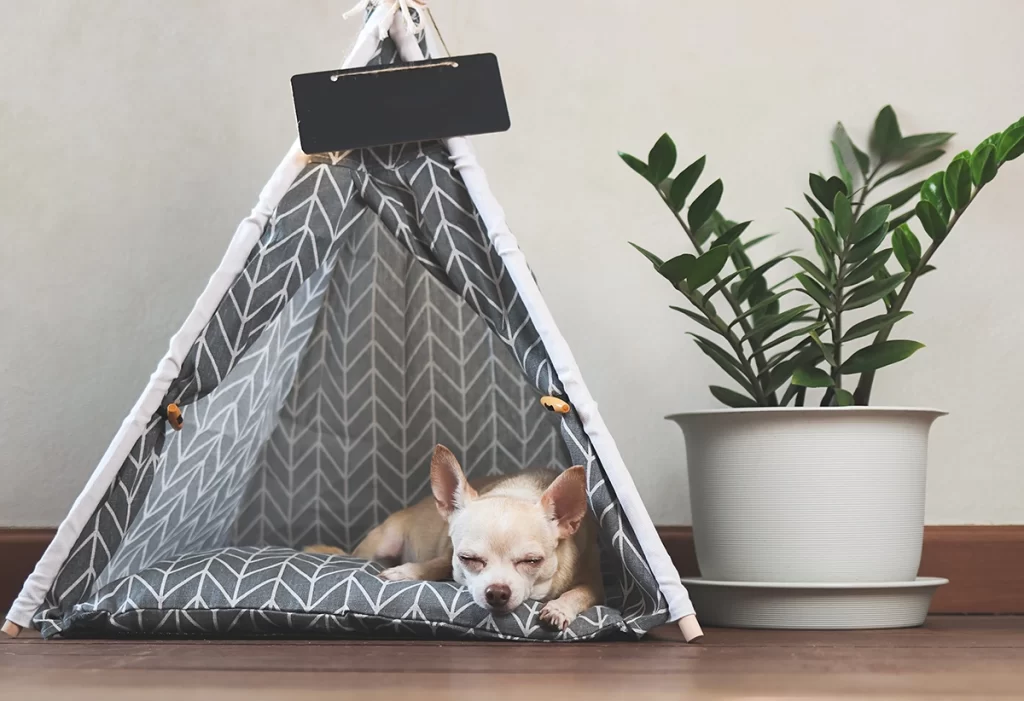
Use Textiles to Define Spaces & Set the Mood
Textiles as Inspiration
Textiles can be a great starting point for your design theme, as they can set the mood and tone for your space. You can choose textiles that reflect your personality, style, location, or theme. For example, you can use a colorful kilim rug to create a boho vibe, or a cozy wool throw to create a cozy cabin feel.
Mix Patterns, not Colors!
Once you have your color palette in place, stick to it. Mixing too many colors can make your small space feel chaotic and cluttered. Instead, mix patterns that complement your color scheme and add some visual interest and variety. For example, you can use stripes, florals, geometrics or animal prints in different scales and shapes.
Layer Textures
Another way to add visual interest and coziness to your small space is by using textiles that come in a variety of textures. You can use soft, smooth, rough, fuzzy or shiny fabrics to create contrast and depth. For example, you can use velvet pillows, faux fur rugs, linen curtains or leather chairs.
Use Textiles for Window Treatments
Window treatments are a great way to add texture and pattern to your small space, and can also provide privacy and light control. You can use curtains, blinds, shades, or shutters in different materials and styles to suit your needs and preferences. For example, you can use sheer curtains to let in natural light and create a soft look, or use blackout curtains to block out light and noise.
Use Textiles for Storage Solutions
Textiles can also help you organize and store your belongings in a stylish way. You can use baskets, bins, boxes, and bags made of fabrics like cotton, jute, canvas, or leather to store your books, magazines, toys, or clothes. You can also use textiles to cover up unsightly storage units or shelves.
In Conclusion, Clever Tiny Home Decor
In conclusion, clever tiny home decor choices can enhance your space. There are so many options for decorating small spaces. You are only limited by your imagination (and space) 😊. Learning how to maximize your space can unleash that imaginative streak for adding style to your tiny house.
Construction or renovation ideas such as using pocket doors or sliding doors to save space can create a seamless transition between rooms. Also, the use of skylights and big windows to bring in natural light to connect with the outdoors are great choices for small spaces.
Our mission, read here.
Read more background on tiny house living here.
Benefits of tiny house living budgeting Choosing the right location Considering the shape of your home Cooking in a small kitchen cost-effective construction Decluttering and downsizing design ideas for small spaces Designing your home with efficiency Design Styles for small spaces downsizing tips family living Gardening and uses for outdoor spaces Getting organized Home footprints to maximize spaces legal considerations Making room for essential appliances minimalist lifestyle off-grid living organizing solutions psychology of small spaces storage solutions sustainable living tiny home Tiny Home costs and regulations Tiny home kitchen Tiny home kitchen backsplash tiny home living tiny house tiny house 400 sq ft tiny house 600 sq ft tiny house 800 sq ft tiny house communities tiny house community tiny house design ideas tiny house financing tiny house for sale Tiny house kitchen layout tiny house living tiny house movement tiny house on wheels tiny house organization tiny houses tiny house storage Using vertical space Getting creative with storage

